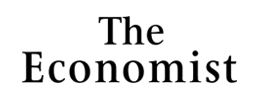Related
The Rise of the Low Carbon Consumer City

My Berkeley friends have written a nice oped discussing evidence of past correlation between climate conditions and violence. Their academic work on this topic is posted here. Does this past predict our future? As I have argued before, I believe urbanization and improved access to cooled buildings will nullify this result. The authors are likely to counter that one paper documents similar effects in the United States—Matthew Ranson's study is available here. Here's my synopsis and take on Ranson's paper.
He creates a county/year/month panel data set covering the years 1960 to 2009. He then studies whether there is a climate/violence relationship by using month by month within county variation in climate conditions. He finds that violent crime rises when it is over 90 degrees farenheit and declines when the temperature is less than 10 degrees farenheit. This suggests that climate change will raise violence in the U.S.
According to the Census, there were 23,000 homicide victims in the United States in 1980. Though population grew substantially in the intervening years, there were only 16,200 homicide victims in 2008. So, the homicide rate fell from 10.2 per 100,000 to 5.4 per 100,000 people. That's progress!
By way of contrast, 51,000 people died in car crashes in 1980 and 37,000 people died in car crashes in the U.S in 2008 (source). So, America's homicide rate is declining faster than its rate of car crash fatalities.
Though Ranson's correlation could be a causal effect—hotter weather causes more violence—the secular trend swamps this climate-related blip.
A richer nation with better information technology and active and effective police forces can activate efforts on hotter days to disperse population and keep the peace. An implicit Lucas Critique lurks in this work. As Lucas taught us back in 1976, when government changes the rules of the game—people re-optimize. A variant of the Lucas Critique is the "Kahn Critique": when mother nature changes the rules of the game, local governments reoptimize and change the reduced form correlation between violence and climate conditions.
Local government will take action because it anticipates the Ranson effect, leading the predictions implicit in his results to vastly over-state the increase in the loss of life. The key issue is the marginal cost of extra policing effort on hot days. These guys could work extra hard on those days and kick back and take it easy on off days. The reduced-form-researchers should explore the marginal productivity of the police and how it varies on hot and colder days. Without such structural estimates, it is impossible to know whether local governments can completely offset the effects that the "historical correlation" scholars have uncovered. A richer nation will have the resources to deploy the extra cops even if the marginal cost of effort is high. This is another example of how income shields us from climate change.
Cross-posted with modifications from Environmental and Urban Economics.
Tile image by Takver
Please fill out the information below to receive our e-newsletter(s).
*Indicates required.